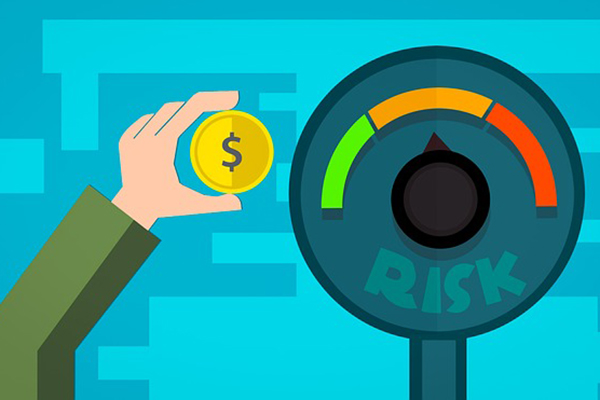There is no such thing as a risk-free business. Every department within an organization has to manage some form of risk every day.
Risk management looks simple on the surface, but is a highly complex part of the organizational and procurement strategy. Controlling and mitigating the myriad of risks associated with business operations is one of the key pillars for success.
We'll look at what this means from a procurement point of view shortly, but to provide some context, first we need to look at the process involved. Risk Management is the process of identifying, understanding and grading risks so they can be better managed and mitigated.
Though the actual process may differ from organization to organization, a true risk management process has a number of common steps. You may even recognize this as a process you are already doing, without even knowing what it really is.
Five Easy Steps to Risk Management
Risk Identification
Risks can range from the major (a key supplier files for bankruptcy) to the less critical (a member of the project team moves to a new role). Every risk needs to be identified, no matter the size. Create a risk register to keep track of them.Risk Analysis
Once identified, each risk is analyzed against two criteria – impact and likelihood (terms are interchangeable). This is usually graded on a numerical scale. Pro tip: Avoid using a scale where there is a middle option, as it's human nature to go for the middle ground if you are not one hundred percent sure.Risk Ranking
Using a risk matrix, give the risk an overall score by multiplying impact by likelihood. This will provide a way to rank all the risks and identify which are the most critical for your organization or project. Where scores are equal, you may choose to favour impact over likelihood (or vice versa) to rank one above the other.Risk Mitigation
Once you know the risks and have a ranking, you need to plan mitigation strategies or contingency plans for each. Make sure that you involve all key stakeholders in this and note roles and responsibilities in the event of these risks occurring.Risk Monitoring
No risk register is set in stone. Impacts and likelihood will change over time; new risks will appear and some may even drop off. A robust monitoring plan is key to making sure your register is up to date and everyone continues to know what to do.
Price Stability: Don't Get a Nasty Surprise
Procurement risks are much the same as other parts of the organization. Procurement strategies should include risk management, while strategic sourcing and strategic buying should help to mitigate the majority of high-profile risks.
However, when faced with longer-term contracts in both direct and indirect sourcing, there is a major risk in unexpected price rises from suppliers. Even with agreements in place within a contract to fix prices for a certain length of time, this risk will still exist and can never be fully planned for or mitigated.
Running through a simple PESTLE analysis of the external environment for a particular industry or market can help to highlight key risks and external factors. The vast majority of these factors could in turn impact pricing, or lead to situations where your suppliers need to increase prices during the life of a contract.
Mitigating the Risk
What options are available to you? Regardless of your relationship with your supplier, or how big a customer you are to them, you can still challenge price increases and ask suppliers for justification for the increases.
You may also choose to limit any price increases to a certain percentage, for example in line with the Consumer Price Index (CPI). However, evidence should still be provided, including where percentage increases sit within the cost breakdown (labor, raw materials, etc.), so the percentage isn't just applied across the whole price.
Or you may choose to mitigate your risk and leverage the expertise of a procurement consulting organization or Group Purchasing Organization (GPO). GPOs can help take the time and resource-intensive risk management process out of your hands and can provide better solutions than you may achieve yourself.
GPOs will provide not only bundled, pre-negotiated contracts, which supply a lower price at the outset, but also support organizations in ensuring full transparency on pricing, even as far as guaranteeing that rates don't increase at all. This leaves more time and resources for procurement to carry out strategic activities, while being assured that they can still deliver those much-desired savings.
Contact UNA today to discuss how GPOs can help your procurement function mitigate risks.
SC
MR


Latest Supply Chain News
- Few executives believe their supply chains can respond quickly to disruptions
- Technology’s role in mending supply chain fragility after recent disruptions
- Tech investments bring revenue increases, survey finds
- Survey reveals strategies for addressing supply chain, logistics labor shortages
- Israel, Ukraine aid package to increase pressure on aerospace and defense supply chains
- More News
Latest Podcast

 Explore
Explore
Business Management News
- Few executives believe their supply chains can respond quickly to disruptions
- Technology’s role in mending supply chain fragility after recent disruptions
- Survey reveals strategies for addressing supply chain, logistics labor shortages
- How CPG brands can deliver on supplier diversity promises
- How S&OP provides the answer to in-demand products
- AI, virtual reality is bringing experiential learning into the modern age
- More Business Management
Latest Business Management Resources

Subscribe

Supply Chain Management Review delivers the best industry content.

Editors’ Picks




